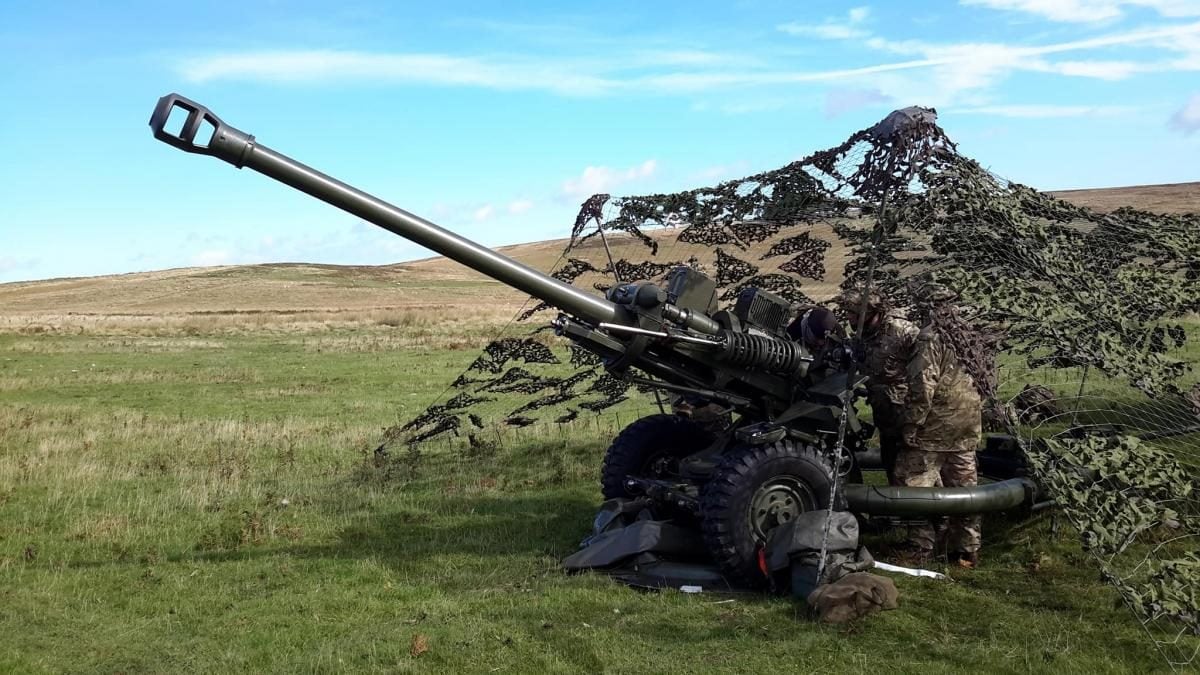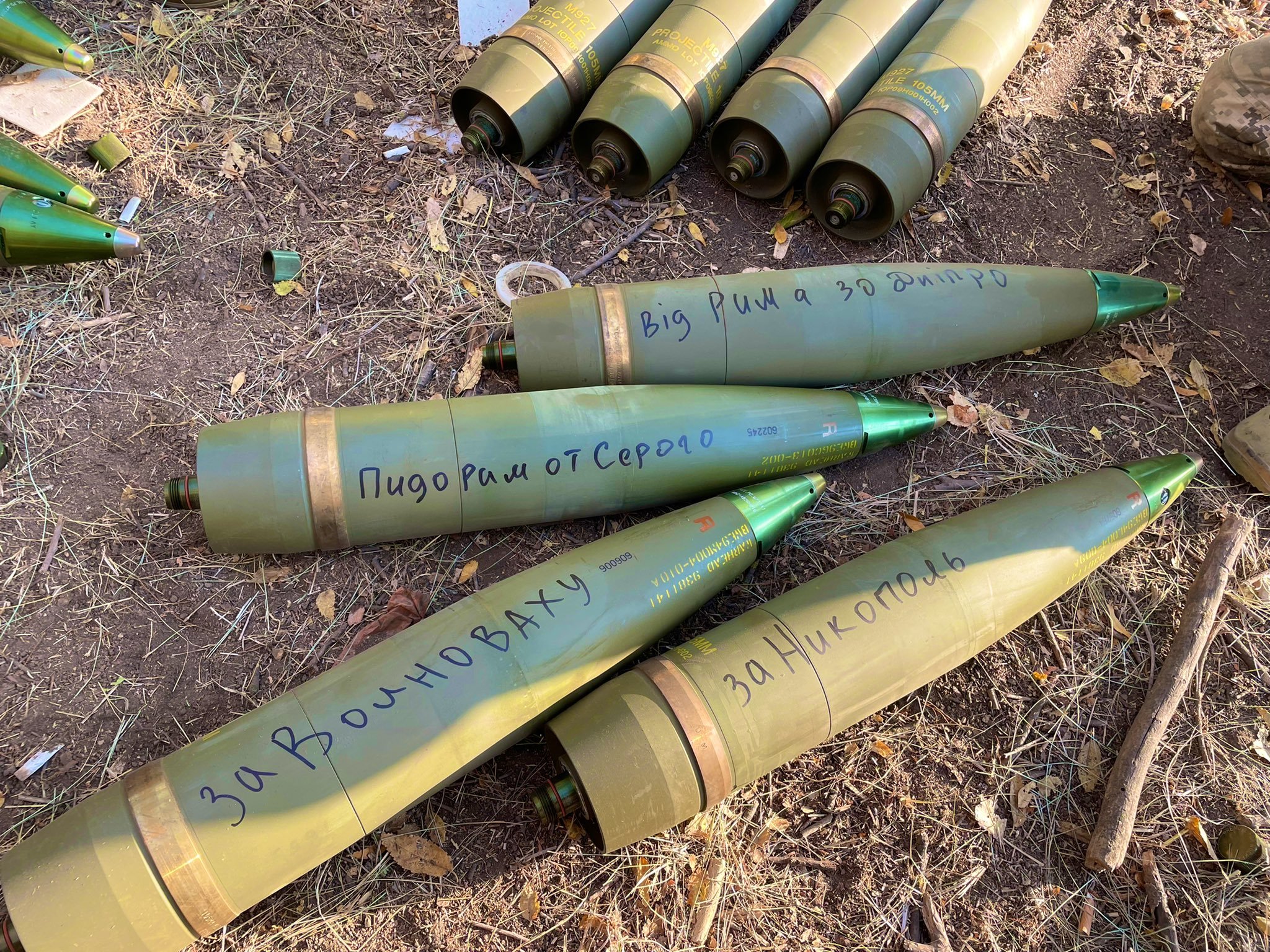
Due to the shortage of Soviet 152-mm and 122-mm artillery shells, the Armed Forces of Ukraine are gradually switching to the NATO-standard caliber. The production of 155-mm and 105-mm shells is increasing, which helps to avoid ammunition hunger.
After the transfer of the M777 howitzers, Ukraine also received lightweight 105-mm L119 and M119 howitzers from some countries. They supplemented the 122-mm D-30 howitzer fleet and replaced them in some units. The lightness of these howitzers makes them more maneuverable and easier to transport using SUVs.
The development of a new lightweight howitzer was announced in 1965. The Royal Artillery was not fully satisfied with the performance of the Italian OTO Melara 105mm light gun, which formed the basis of the light artillery units.
Due to the short barrel length, the gun had a short firing range. Such weapons were obsolete.

In addition, the gun carriage did not ensure stable platform behavior while towing the gun over rough terrain and at high speed.
In 1966, specialists from the RARDE (Royal Armament Research and Development Establishment) launched the design work to develop a new gun. The development occurred quickly due to the specific requirements of the military and the use of a new L13A1 howitzer gun for the Abbot self-propelled guns.

Successful tests of the L118 prototype gun took place in 1970. The British Military Command was satisfied with the demonstrated results, and already in 1973, the gun was adopted.
Production of new howitzers was deployed at ROF (Royal Ordnance Factory) Nottingham. The Royal Artillery received its first produced guns in October 1974.
They entered light artillery regiments. One regiment had three batteries of eight guns each.
The gun was hugely successful, and its capabilities were impressive. Therefore, foreign customers became interested in these weapons. So, in late 1981, Australia ordered a batch of L118 guns.
In 1982, Americans got interested in the howitzer. In early 1984, the US Army leased six howitzers for comprehensive testing. A further 14 howitzers were leased in 1985.
The 9th Infantry Division at Fort Lewis, Washington, was responsible for the test. The test howitzers received the American designation XM119. The XM119 howitzer used an L110 barrel to fire American М1 105mm rounds.

In early 1986, the US Army announced the acquisition of 583 М119 light howitzers. Under the terms of the contract, only 147 howitzers were supposed to be manufactured at ROF Nottingham, and the rest were to be produced in the United States.
An L118/119 lightweight howitzer is a 105-mm gun with a muzzle brake on several partitions. Howitzers for countries using the American М1 artillery rounds received an L119 index and a shorter barrel.

The ammunition of the L118 howitzer consists of an L31 HE-Frag weighing 16.7 kg, L42 high-explosive squash head, L41 inert practice/illuminating munitions, and L45 smoke shells.
The total weight of the howitzer is 1980 kg, which allows transporting it with helicopters such as Puma, Blackhawk, Wessex, and others.
The British L118 version has six propellant increments options. Five of them are designed for short and medium ranges, and the sixth Charge Super is designed for a 17-km range. The American version is equipped with seven types of propellant charges, with a maximum range of 11.5 km.

In the 1990s, British howitzers underwent a number of modernizations to improve firing accuracy. A special radar was installed above the gun to measure the initial muzzle velocity of the projectile to adjust the propellant charge, along with a fire control computer, where data is output from the radar.

It also uses three-ring laser gyroscopes to determine azimuth, place angle, and trunnion angle. The system is equipped with tools for navigation and self-examination via a global positioning system, measuring inertial direction and distance.
Additionally, in 2007, the modernization process started to reduce the weight of the howitzer. This involved replacing some steel components with titanium ones.

In 2012, howitzers underwent an additional partial upgrade to improve electronic gun guidance systems. Due to the new fire control unit, the gun could fire with direct fire more accurately.
Back in April 2022, Ukrainian gunners underwent training in New Zealand to familiarize themselves with L119 howitzers. In addition, Australia, the United States, and the United Kingdom announced the transfer of these guns. Already in the summer of 2022, videos of the use of these guns at the front started to appear online.
The active use of the L119/M119 allowed Ukrainian artillerymen to evaluate these howitzers after practical combat application.
“Sometimes we work with adjustments, and sometimes we work against the predefined targets. For example, there is an area where the invaders are entering. We are already adjusted with it, and every day, we can pour there to prevent them from taking those positions,” artillerist Andriy shared.
They note the excellent accuracy, rapid deployment and folding of howitzers, and the availability of rocket-assisted shells for firing at a range of about 24 km. The light weight allows the howitzer to be transported using a conventional HMMWV.
For the first time, M927 105mm high-explosive rocket-assisted shells for M119 howitzers were spotted in the fall of 2022.

The gunners from mechanized and airborne units received howitzers of this type.

Also, guns of this type were spotted arming the 77th Airmobile Brigade, the 2nd Rifle (mechanized) Battalion of the 67th Mechanized Brigade, and the 46th Airmobile Brigade.
The lack of the British L118 version in the Ukrainian Armed Forces is due to the use of other shells. They are not as common as the American M1 shell, which has been produced since World War II.
In general, for some units, howitzers of this type have become an excellent replacement for D-30 122mm howitzers and demonstrate better results than Soviet guns.
Підтримати нас можна через:
Приват: 5169 3351 0164 7408
PayPal - paypal@mil.in.ua
Стати нашим патроном за лінком ⬇
Subscribe to our newsletter
or on ours Telegram
Thank you!!
You are subscribed to our newsletter